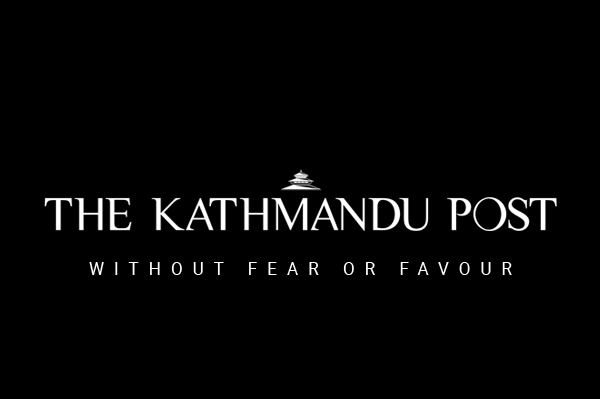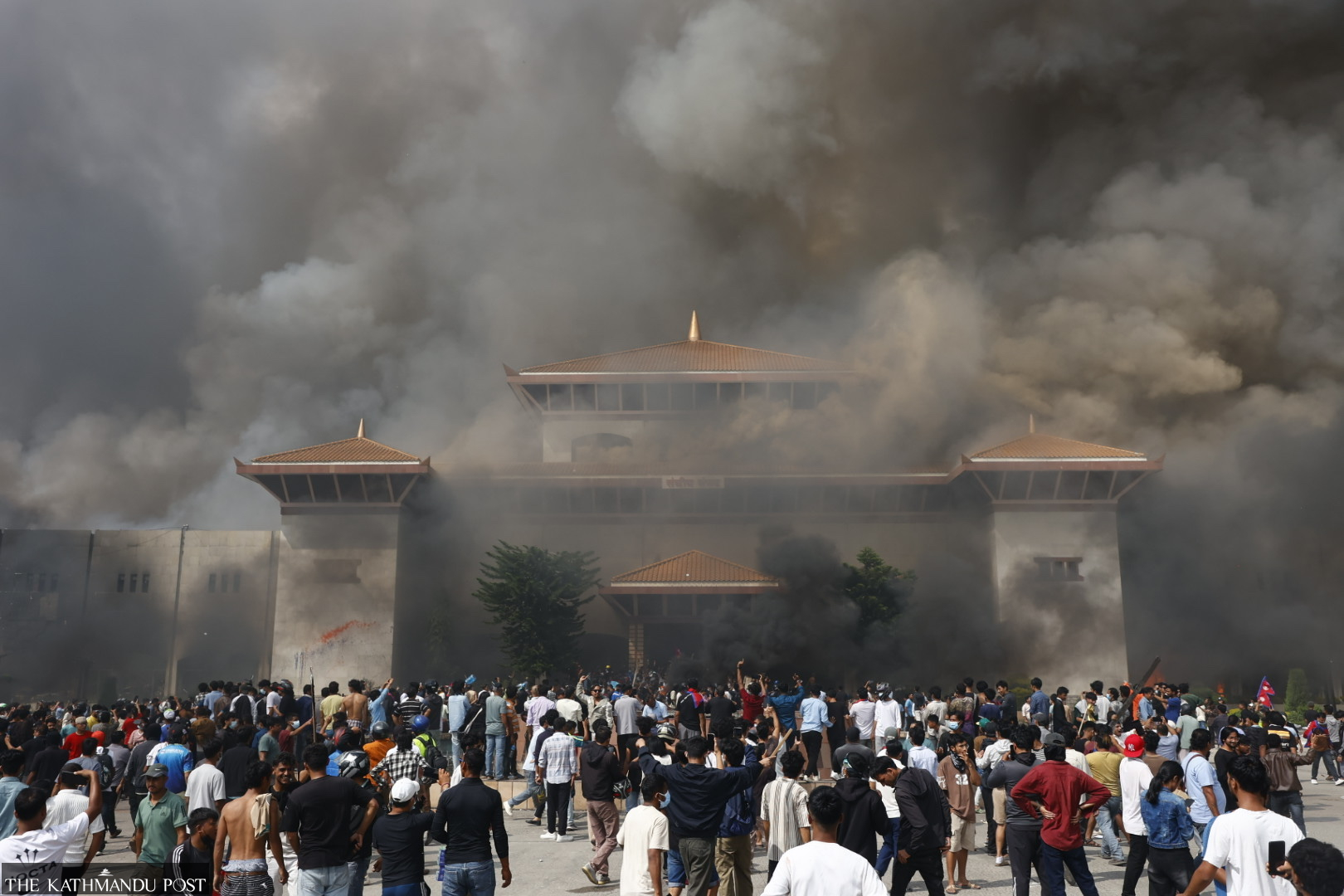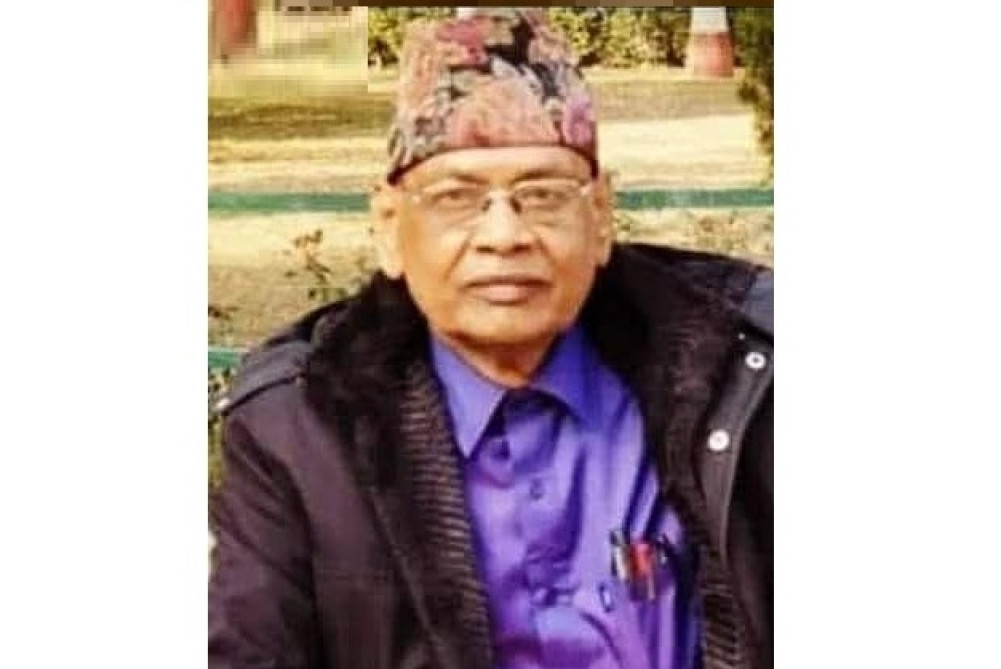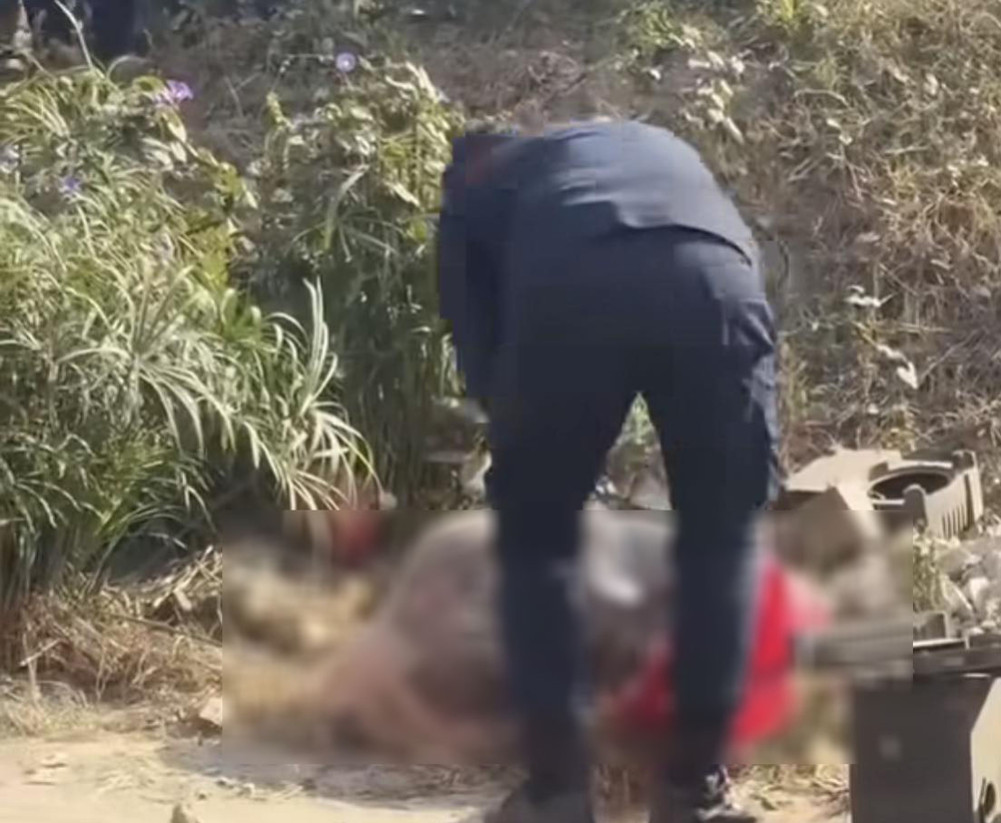Valley
The man who burns the dead for a living
Even after burning thousands of bodies, it hasn’t gotten any easier for 49-year-old Chandra Dhakal.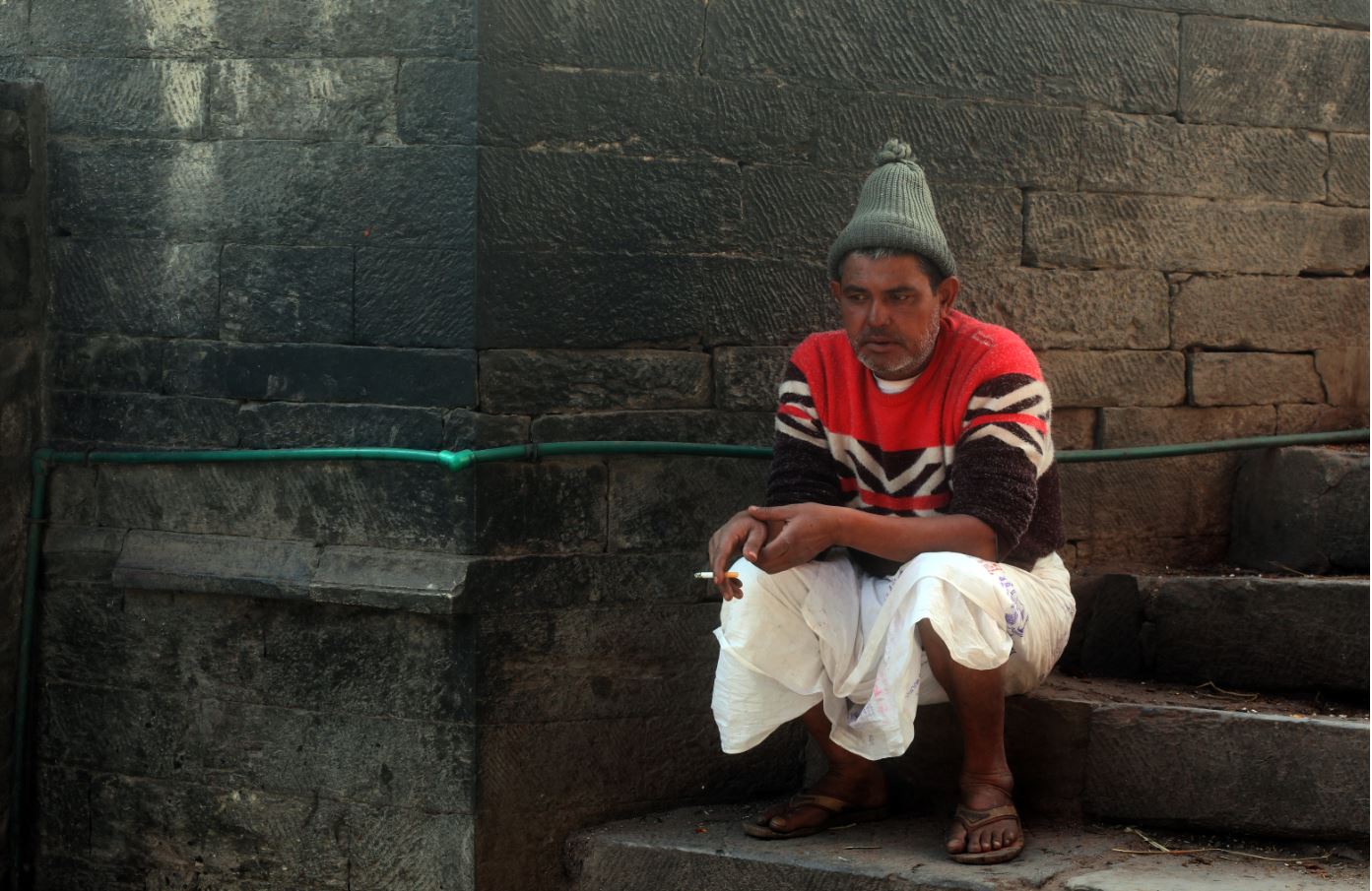
Anup Ojha
There is a deep continuous wailing, punctuated occasionally by the resonance of a single high-pitched conch. Amid the sonorous tolling of large brass bells, at the Pashupatinath temple’s Brahmanal, ghat number two, Chandra Dhakal prods a funeral pyre with a long, green bamboo stick. Despite the noise, Chandra is as silent as the Bagmati River, where more pyres float slowly down its murky waters.
It takes an average of three hours for a body to burn completely. In that time, more bodies keep coming in to the Bramhanal, where they are washed with holy water before being taken to other ghats to burn. The atmosphere echoes with the wailing of relatives as they pour water and flowers over the lifeless bodies of their loved ones. Chants of ‘Ram naam satya ho’ repeat.
But Chandra works undeterred, methodically poking and prodding different areas of the burning body with his stick and turning it over so that it burns evenly. When the fire goes out, he pours ghee, causing the embers to sputter and emit smoke.
Once the body has turned completely to ash, Chandra finally walks away and washes his hands under a nearby tap. He dries his hands on his dhoti and lights up a cigarette. Once he’s finished, he tosses the cigarette butt into the holy Bagmati and goes back to work, jostling the burning saal logs so that the fire grows bigger. Another body comes in. Around him, the smell of bodies burning permeate the air.
Chandra Dhakal has been cremating dead bodies at the Pashupatinath Aryaghat since he was 13 years old. Now 49, he estimates he has burned over 27,000 bodies.
“I cremated the bodies of King Birendra, Queen Aishwarya and King Dipendra. I was one of the cremators for Krishna Prasad Bhattarai and Girija Prasad Koirala,” says Dhakal, referring to the cremation of the members of the former royal family and prime ministers. “These are a few of the things that I am proud of.”

***
For Chandra Dhakal, growing up in Kavrepalanchok was not easy. His mother passed away when he was just two years old and his youngest sister 11 months old. In his home village of Deupur, his father worked as a daily wage labourer as the family didn’t own any land of their own. His family was poor and his childhood was harsh. He recalls many days of sleeping on an empty stomach.
Chandra’s education ended after first grade, when he stopped going to the Tapeshwar Higher Secondary School. With his father working and his sister growing up, he had to handle the household. At the age of nine, his father pulled him into daily wage labour, ploughing the fields for money.
But Chandra was a happy child, full of life and vigour. He cracked jokes, sang and danced, entertaining a motley assortment of villagers.
“People in my village loved me because I could make everyone laugh,” says Chandra.
When he was 12, with three rupees earned from ploughing the fields, Chandra ran away from home. He sat on the roof of a bus, saving on bus fare and saving his three rupees for food. He was on his way to Kathmandu to meet his uncle, Ganesh Dhakal, who burned bodies at the Pashupati Aryaghat.
At the Aryaghat, Chandra got work carrying firewood to the pyre. The job paid him Rs 15 for the entire day. But Chandra wasn’t unhappy. There was enough to eat at Pashupati and he slept at the Saraswati Pati, in front of Vatsala Devi Temple.
A year after his arrival to Kathmandu, Gopal Shrestha, a contractor who supplied firewood to the Aryaghat, asked him if he was willing to cremate a dead body. This was 1983, and there weren’t more than half a dozen cremators. Chandra hadn’t thought about it but he quickly said yes, even though he was scared.
“Back in the village, I used to run away just listening the conch blowing, which signals a dead body being taken to the river,” Chandra says.
He remembers the first body vividly. “It was a giant male body with an open mouth,” he says.
When he first stepped up to the funeral pyre and saw the body, he lost his composure. He couldn’t do it, so he ran away. He was barely a teenager.
“But I had to prove myself,” says Chandra.
He seized a bamboo pole in his hands and stirred the flames. As the flames grew higher, the body grew smaller, and Chandra thought he would feel better. But that night, he couldn’t sleep.
It took four more bodies before the night terrors went away. But burning a human body is something you never get used to, says Chandra.
Since those first days, he’s seen hundreds of dead bodies—old and young, fat and thin, men and women, sick and healthy. Then, for every body he burned, he received Rs 75, which seemed like a fortune to him.
Unfortunately, his newfound wealth invited envy from others at Pashupati. Other boys, his age and older, began to chase him down and beat him ruthlessly, taking any money he had. At the sprawling Pashupati complex, there were many like him—kids who had run away from home, the homeless, the abandoned, the desperately poor. At 13, Chandra was an easy prey.
Until he reached the age of 16, Chandra suffered beatings every day, he says. He would cry himself to sleep every night, but even while asleep, a few boys would come around and torment him. All of that changed when he turned 17. He grew taller and more muscular, and started to fight back. But it wasn’t his aggression that made him ‘king’ of the ghat, says Chandra.
“It was my friendly and helpful nature that helped me make friends with everyone, from the police to gangsters,” he says. “Once I got older, no one ever dared hurt me.”

***
At the age of 20, Chandra Dhakal fell in love. There was a young girl he’d seen around often. She studied in the eighth grade at the Sharada Secondary School in Pashupati. Her name was Pramila and she lived on the Pashupatinath premises with her parents.
“She was not from a rich family,” Chandra says. “She was impressed by my singing and my outgoing personality and fell in love with me.”
They were married soon after Chandra began courting her. Pramila was 15 at the time and never finished school. She doesn’t mind Chandra’s profession, he says. “In any case, there isn’t any alternative as I am illiterate and she never finished school. So I am the sole breadwinner of the family,” says Chandra.
Chandra makes about Rs 20,000 a month, but he supplements his income with donations from the dead person’s family. He is also allowed to keep the gold from the body. Sometimes the dead person’s family will offer him Rs 500 or 1,000 if they are from out of the Valley as he can’t make it to their home for the 12th day meal. It is Hindu tradition that the ones who burn the body are invited to the dead person’s home on the 12th day for a meal.
But despite his years of work and the incidental income he makes, he hasn’t managed to put anything away. He owns no land, no house and his savings are meagre. Dhakal blames himself. He spent much of his earnings at the dohari, and on women and drinking.
“I am a good singer and dancer. Many girls would come after me,” he says. “At the bars, money flowed like water. If only I had saved up, I could’ve built two houses in Kathmandu.”
His relationship with his wife nearly soured at this point, as he was spending almost everything he made on bars and women. It took him a long time before he stopped and by then, he’d lost a lot.
“Now I realise that I should have been more responsible towards my family,” says Chandra.
These days, Chandra is putting his money where he should—into his family. He pays Rs 16,000 as rent for his home in Kumarigal and uses the rest to pay for his eldest son’s education. Twenty-five-year-old Suraj is currently studying hotel management and wants to go abroad, preferably to Poland.
Meanwhile, his youngest son, Suman, 20, is a high school dropout and wants to become a hip-hop artist. Unlike Suraj, Suman idolises his father.
“My father is my idol,” says Suman. “He gave us education and everything we needed in life. We don’t talk about his job at home. I am a struggling artist but once I earn money, I will tell my father not to go the Aryaghat anymore.”
Suman has big dreams and Chandra is willing to do whatever he can to support his family. But ever since the electric crematorium opened in Pashupati in 2016, work has gotten leaner for Chandra. In 2015, before the electric crematorium opened, the Ghat Crematorium Management and Service Committee, of which Chandra is a member, halted all cremations in protest. The Pashupati Area Development Trust, which is responsible for everything inside Pashupati premises, provided Rs 150,000 to those who quit and continued undeterred.
“We spent our entire lives burning dead bodies and playing with fire in extreme heat and smoke. We all have health and psychological problems and also financial problems. We are all uneducated, and that is why the Trust has shown indifference towards our problems. Neither the Trust nor society considers us human beings,” laments Chandra.
Every cremator at Pashupati, of which there are 30 persons, now makes Rs 1,085 a day. But now, with the electric crematorium in operation, only half of the dead bodies are brought to the Aryaghat. On average, there are 15 bodies to be burned a day and with 30 cremators, a rotation has been put in place.
“Before the electric crematorium was installed, I used to burn a minimum of three bodies in a single day,” says Chandra.
For Dhakal, who has now spent over 35 years at Pashupati, the Aryaghat has become like his second home. He feels his age in his bones and would like to retire but that’s not an option for someone like him, he says. How else is he going to send Suraj abroad, support Suman’s ambitions and feed and clothe Pramila?

***
Even after burning thousands of bodies, it hasn’t gotten any easier for Chandra Dhakal.
To soothe his mind, he drinks. Chandra drinks every day in the evening and sometimes even during the day. “Drinking heals me,” he says.
Given the things he’s seen, Chandra says he uses alcohol to keep the demons at bay.
During the Maoist insurgency, from 1996 to 2006, Chandra burned bullet-ridden bodies that were missing hands and legs, some even their heads. He remembers spending whole nights at the Aryaghat, burning the bodies of Nepal Army and Nepal Police personnel who were killed in the conflict.
“We only received dead bodies from the state’s side, never any Maoists. The bodies would be brought on a truck in the dead of night,” recalls Chandra. During the height of the war, he, along with two friends, burnt up to 15 bodies a day, he says.
There are bodies that are harder to burn. Not because of who they are but because of how the bodies were preserved. For instance, at least one or two bodies of dead migrant labourers arrive in Kathmandu from the Middle East every day.
“These bodies are covered in chemicals to preserve them. But while burning, the chemicals smell terrible and even cause wounds to my hands,” says Chandra.
Based on his experience, dead bodies that are brought in from hospitals, especially suicide cases, are among the most difficult ones. They are harder to burn because of the chemicals used in embalming the body and because of the post-mortem.
“The intestines burst from where they are stitched and the entrails get all over my face and body,” says Chandra. “Sometimes, the bones burst, the heart bursts and everything gets on my body.”
Chandra has numerous wounds on his hands and legs to show, caused by fire and the burning bodies. “Playing with fire and a dead body is not easy,” he says. “You can’t imagine it during summer. The heat becomes so intense that I get dehydrated and feel dizzy, but I can’t leave until the entire body has turned to ash.”
Chandra recalls the 2015 earthquakes, but not in the way that most others do. For him, the days following the earthquakes were among the busiest. Dead bodies were piling up; the crematoriums were all full and even the shores of the Bagmati were lined with bodies.
In a single day, 385 bodies were burnt—a record number. “We even burned many bodies for free because we would get bodies but no relatives,” says Chandra.
There are many things Chandra doesn’t like about his job. He hates being serious and silent all the times and he hates dealing with the smoke during the rainy season when the logs don’t burn. But most of all, he hates cremating the young, whose bodies remind him of his own children.
Chandra’s eyes are haunted and when he holds a cigarette, his hands tend to shake. His arms and legs are covered in wounds, some scabbed over, others fresh. His skin is burnished brown by the flames. His face is puffy from the drinking and the sleepless nights when he can’t forget the bodies that he’s burned.
For Chandra Dhakal, every day is a reminder of that one intractable fact of life—everyone dies.




 9.12°C Kathmandu
9.12°C Kathmandu.jpg)
